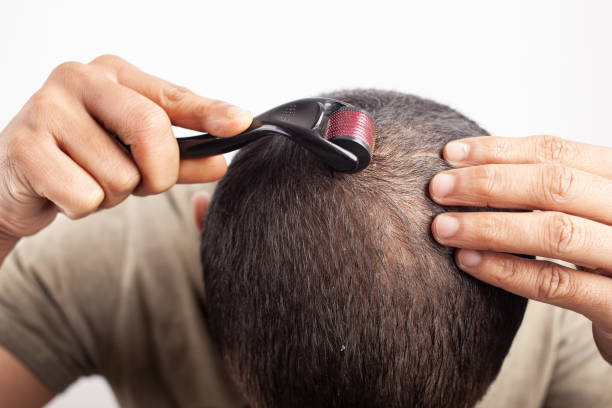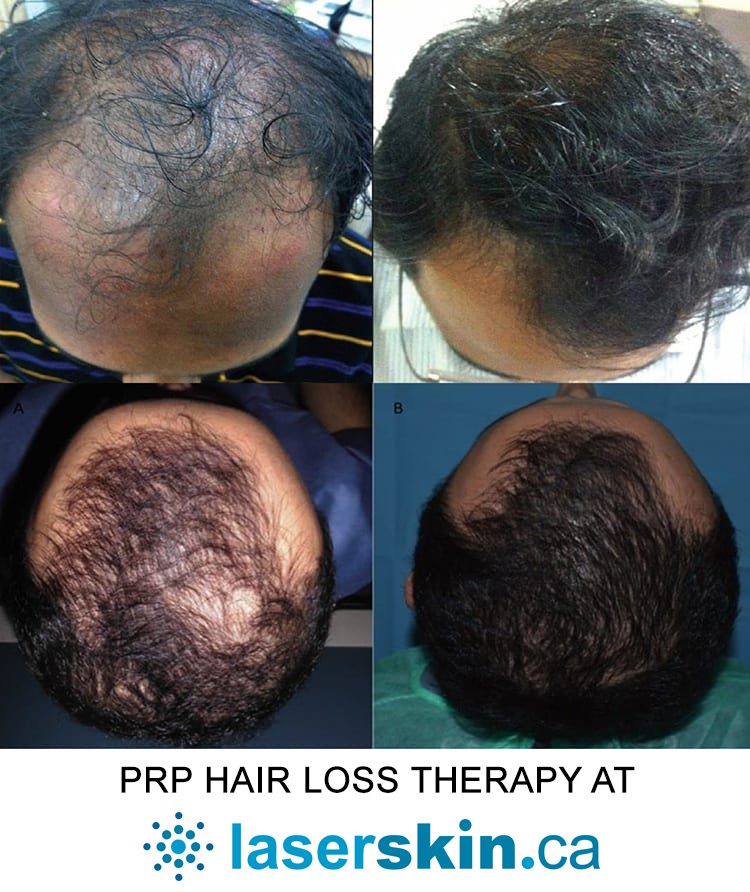
Table of Contents
Microneedling for Hair Loss
Microneedling for hair loss is a cosmetic therapy that targets different ageing effects, including alopecia. Because of its impact on stimulating collagen formation in the skin, it is also known as skin needling. Microneedling employs a skin roller with little needles to induce minor skin injuries. Microneedling, although often utilized as an anti-aging skin therapy, may also cure hair loss.
There’s evidence that it may assist with alopecia areata, a hair loss. The exact mechanism that causes wounds in the skin is considered to restore the health of hair follicles. This is supposed to drive new hair growth or thicken thinning hair, as observed in androgenic alopecia or male baldness.
The advantages of microneedling for hair loss
- Microneedling rose to prominence as a scar therapy in the 1990s. It has since been researched as an alternate or supplementary treatment for androgenic alopecia and alopecia areata.
- Aside from stimulating collagen formation in the skin, which is regarded to be one of the reasons it may be suitable for acne scars, it is also suggested that microneedling might help trigger stem cells in hair follicles, which may contribute to hair growth.
- Microneedling may also aid in the absorption of hair loss treatment products such as PRP (platelet-rich plasma) and Minoxidil (Rogaine)
According to one research, Trusted Source, in particular, investigated the possible advantages of microneedling in conjunction with a topical corticosteroid for treating alopecia areata.
How does it work?
Your healthcare professional will use a roller with needles on it during microneedling.
The needles may vary from less than 1 millimetre to a few millimetres. They’re all housed in a portable gadget. The instrument, sometimes known as a roller, is rolled along the treatment area, causing minor damage.
Some hypothesize that microneedling may trigger the release of growth factors or directly stimulate hair growth due to the minor lesion created.
About 45 minutes before treatment, your healthcare professional will administer a topical anesthetic to your scalp. This helps to alleviate any discomfort you may be experiencing.
The actual operation time varies depending on the size of the treatment region. However, it is usually less than 10 minutes. Following the scalp microneedling, your healthcare professional can put a topical balm on the treated area or provide an injection, depending on the purpose of the microneedling session.
Microneedling side effects on the head
Microneedling may result in the following:
- Oozing bruises from wounds, redness
- swelling
- pain
- There’s also a chance that the needle wounds may scar.
The region may be red and irritated for a few days after the surgery. The American Academy of Dermatology (AAD) reports that most side effects subside within five days of treatment.
Before considering this therapy, consult with your healthcare professional if you:
- Have a history of eczema or acne, or have a disease that causes healing to be sluggish, such as diabetes, are using blood thinners or other drugs
- Microneedling is also not advised for pregnant women.
- Using minoxidil shortly after microneedling may enhance absorption and produce further burning, stinging, and irritation on the scalp. It’s essential to consult with your doctor about when you should restart using topical minoxidil following therapy.
- Following treatment, your scalp may become more sun sensitive. It is suggested that you use sunscreen every day. When you’re out in the sun, a hat might help protect your scalp.
- Another danger of having microneedling on your head is infection. Even though the needles are tiny, they cause wounds.
- To avoid infection, please follow the aftercare recommendations. Keeping the region clean for a few days and using a prescription topical or oral antibiotic to fight against germs are standard aftercare measures.
- You may be more susceptible to infection if you have other major health concerns or a history of repeated illnesses.
At-home derma roller treatment
- Some individuals acquire derma rollers to self-administer microneedling treatments at home to save money and time.
- According to one firm, Dermapen, at-home treatments may cost as low as one-third of the price of professional microneedling procedures.
However, there are several substantial disadvantages to using derma rollers at home. These are some examples:
- Unfamiliarity with needle size, limited view of the scalp, lack of professional targeting, incorrect roller usage, stopping at the wrong time, insufficient pressure & improper roller technique.
- These variables may make your therapy less successful compared to visiting a professional.
- A qualified microneedling practitioner will also be able to assist you in minimizing adverse treatment effects. Assessing risks and treating consequences on your own might be tricky.
- While it may be tempting to purchase your derma roller, it is better to entrust this equipment to a certified and experienced expert for hair loss therapy. Dermatologists strongly advise against doing microneedling at home or with untrained practitioners.
How much does microneedling for hair loss cost?
- Out-of-pocket expenses for microneedling may vary from $200 to $700 for each session. Each session will be more costly as the treatment area expands.
- Because microneedling is considered a cosmetic procedure, medical insurance often does not cover it. If you are having the surgery done for medical reasons, your insurance may pay part of the expenses.
Choosing a Professional
- Qualified skin care experts carry out microneedling procedures. Dermatologists and cosmetic surgeons may be among them.
- Because microneedling is not a surgical technique, the risks are often lower. However, it is still suggested that you seek the services of an experienced and educated specialist to avoid issues such as scarring.
- Request a consultation with each possible provider you’ve identified. You will then better understand their expertise and the estimated treatment expenses.
- At Laser Skin Clinic, we provide microneedling with PRP or Potenza RF microneedling.
Takeaway
For those who can afford it, microneedling may be a potential hair loss therapy, especially for androgenic alopecia, to add to any existing treatment plan.
Please talk about all of your hair growth choices with your healthcare physician. The best facility in Toronto is used by Laser skin clinic; they use RF Microneedling Potenza by Cynosure, which is of the top quality in the microneedling world.
If you have already noticed that your hair is becoming thinner, getting a hair transplant may be the most effective treatment option for you at this time.
(647) 560 9233 Schedule Your Free Consultation Today!

